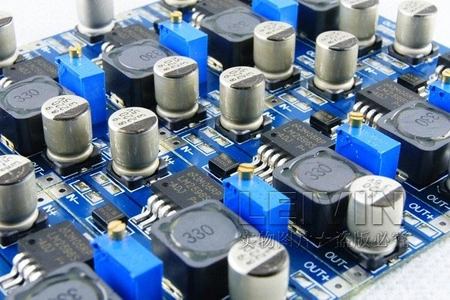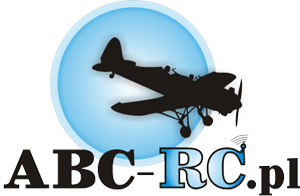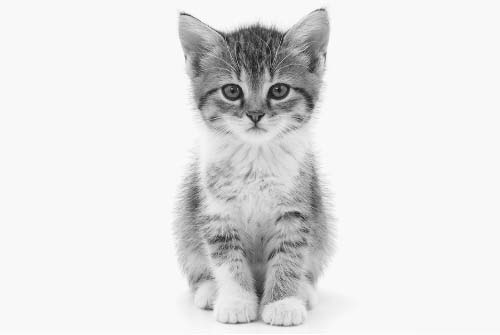Add products by adding codes
What is a dc-dc inverter used for?

DC/DC converter is an important device in the world of electronics. Its main task is to change the DC voltage from one level to another. It is crucial for efficiently powering devices, from smartphones to advanced industrial systems.
Voltage converter ensures stable supply of electricity. This is important for the performance and durability of electronic equipment. DC/DC converters are prized for their energy efficiency.
Key information
- DC/DC converters change the DC voltage level
- They are essential in powering a variety of electronic devices
- Provide a stable and efficient supply of energy
- They are used in automotive, consumer electronics and industrial applications
- Various models are available, with wattages ranging from 1200W to 2000W
Introduction to DC/DC converters
DC/DC converter is an important element in modern electronics. It enables effective power supply of devices with different voltage requirements. Let's get to know this interesting authority.
Definition of a DC/DC converter
DC/DC converter is a device that changes the DC voltage. It acts as a translator, connecting different voltages and powering devices.
Basic principle of operation
DC/DC converter works by converting electrical energy. Uses PWM modulator, processing circuit and control system. The most common are voltage reduction inverters (buck).
Importance in modern electronics
DC/DC converters are key in powering electronics. Allow to provide energy to devices with different requirements. Here is some important information:
- Buck-Boost converters can handle voltages from 6V to 45V
- It is possible to provide a continuous current of up to 5A, with the possibility of a short-term increase to 6-7A
- Output noise is 5mVp-p without load and 30mVp-p at 5A load
| Inverter type | Efficiency | Power range |
|---|---|---|
| With linear regulator | 65-75% | Less than 1W |
| With a feedback loop | About 85% | Several watts |
| With FET rectification circuit | About 90% | Up to several tens of watts |
DC/DC converters are the foundation of modern electronics. Enable efficient DC voltage conversion and power supply of various devices.
Types of DC/DC converters
DC/DC converters are important in modern electronics. Change the DC voltage to another. They are available in different types, depending on your needs.
Step-up (boost) converters
- Step-up converter, i.e. boost, raises output voltage. It is popular in portable electronics. Allows operation at a higher voltage than that provided by the battery.
Step-down (buck) converters
- Step-down converter, i.e. buck, lowers output voltage. It is often used in power systems. Allows lower voltage operation for electronic components.
Buck-boost converters
- Buck-boost inverter can both raise and lower tension. Automatically adapts to your needs, switching between modes.
| Inverter type | Function | Main application |
|---|---|---|
| Step-up (boost) | Increases tension | Portable electronics |
| Step-down (buck) | Lowers tension | Power systems |
| Buck-boost | Increases or decreases voltage | Versatile applications |
Inverter selection depends on the needs of the application. Each type has its own advantages and is best under certain conditions.
Inverter efficiency is the ratio of output power to input power. It is important when choosing a device.
What a dc-dc inverter is used for?
The dc-dc converter is an important device in electronics. Used to change the DC voltage. It ensures that the voltage is adjusted to the needs of electronic devices.
DC dc converters stabilize the power supply. Provide constant voltage, regardless of changes in input voltage. It's important for devices to work properly.
DC dc-dc converters are available in different versions. Some can operate from 9 to 36 volts. They have high efficiency, from 70% to 90%.
| Parameter | Value |
|---|---|
| Typical input voltage range | 9-36 V |
| Efficiency | 70-90% |
| Number of available models (BNS example) | About 100 |
DC dc converters are useful in many areas. From consumer electronics, industrial, automotive, and renewable energy. Are crucial to many electronic systems.
Key components of the DC/DC converter
DC/DC converters consist of several important parts. These parts work together to effectively change tension. Learning their meaning helps to better understand how inverters work and their role in electronics.
PWM modulator
PWM modulator is the heart of the DC/DC converter. Generates pulses of variable width. This allows you to precisely control the output voltage.
Processing circuit
Processing circuit consists of an inductor, a capacitor and a diode. These elements work together to change input voltage to the desired output. An inductor stores energy, a capacitor smooths the voltage, and a diode prevents current from flowing in the wrong direction.
Adjustment system
The adjustment system checks output voltage and adjusts the operation of the PWM modulator. Thus, it maintains a stable voltage. This is important for the reliability and efficiency of the inverter.
| Component | Function | Meaning |
|---|---|---|
| PWM modulator | Generation of control pulses | Output voltage control |
| Processing circuit | Voltage conversion | Implementation of DC/DC conversion |
| Adjustment system | Monitoring and adjusting | Ensuring voltage stability |
Understanding the role of each component makes it easier to design and optimize DC/DC converters. It is important for a variety of applications, from consumer electronics to advanced industrial systems.
Advantages of using DC/DC converters
DC/DC converters have many advantages in modern electronic systems. They are very efficient, which means less power loss. This makes the devices run longer on batteries.
Their main advantage is voltage adjustment to the needs of the equipment. This allows different parts to be powered from a single source. This simplifies design and reduces costs.
DC/DC converters stabilize voltage. This keeps the output voltage constant, regardless of changes in input voltage or load. This is important for electronic devices that are sensitive to voltage.
| Advantage | Description |
|---|---|
| Energy efficiency | Minimize losses power, extend battery life |
| Voltage adjustment | Powering various devices from a single source |
| Voltage stabilization | Constant output voltage regardless of input changes |
| Compactness | Smaller size compared to transformers |
| Versatility | Applications in various fields of electronics |
DC/DC converters are popular in industrial, electronics and renewable energy industries. Their versatility and performance make them indispensable in modern electronic devices.
Applications of inverters in various fields
Voltage converters are versatile and are used in many fields. From consumer electronics to industry, they play a key role. Provide adequate power supply for various devices.
Consumer electronics
In consumer electronics, inverters are essential. They are used in laptops, smartphones, routers and televisions. Thanks to them, energy is managed efficiently. This leads to longer battery life and better device performance.
Industry and automation
In the industrial industry, inverters are key. PLCs, sensors and other automation equipment need stable power supply. Inverters provide what is needed for precise control and maintain high product quality.
In the automotive industry, inverters are very important. Enable powering lighting systems, audio systems and on-board equipment in electric cars. They allow electronic devices to be used while traveling, making passengers more comfortable.
Renewable energy
In renewable energy, inverters are indispensable. Photovoltaic panel inverters, or solar inverters, convert direct current to alternating current. This allows you to power your home appliances. Also in wind power, inverters help to use the generated energy efficiently.
Inverters are widely used in various fields. From electronics to industry, they are essential to ensure adequate power supply. Thanks to them, energy is used efficiently.
Technical parameters dC/DC converters
DC/DC converters have important technical parameters. Input voltage usually ranges from 6 to 30 V DC. The output voltage is 12 V DC, which is typical.
Inverter efficiency is very important. New devices have up to 90% efficiency. This means little energy loss. The maximum current is 2.5 A, and the power is 30 W.
Operating temperature is important. Inverters operate from -10°C to +40°C. Their dimensions are about 40 x 60 x 24 mm, and they weigh 25 grams.
| Parameter | Value |
|---|---|
| Input voltage | 6 - 30 V DC |
| Output voltage | 12 V DC |
| Inverter efficiency | 90% |
| Output current | max. 2.5 A |
| Operating temperature | -10...+40 °C |
Knowledge of these parameters facilitates choice of inverter. As a result, the device operates efficiently and reliably.
How to choose the right DC/DC converter?
Choosing a DC/DC converter is an important step in electronic circuit design. Good requirement analysis allows you to choose the perfect device. This is the key to success.
Analysis of application requirements
To begin with, you need to carefully analyze the requirements. Voltage ranges, power and type of housing are important. Don't forget about insulation strength and operating temperature range.
Key selection criteria
When choosing an inverter, pay attention to several important aspects:
- Output power - must match the needs of the equipment
- Energy efficiency - affects costs
- Output voltage stability
- Immunity to electromagnetic interference
- Protection against overload and short circuit
Comparison of available options
There are many types of DC/DC converters on the market. Here is a comparison of the most popular ones:
| Inverter type | Advantages | Disadvantages |
|---|---|---|
| Step-up (boost) | Increases the output voltage | Lower efficiency at high voltage difference |
| Step-down (buck) | High efficiency | Lowers the output voltage |
| Buck-boost | Versatility of applications | Higher price |
When choosing an inverter, always analyze the requirements and criteria. This guarantees optimal performance of the electronic system.
Energy efficiency of DC/DC converters
Inverter efficiency is very important in electronics. New DC/DC converters score high in energy savings. Isolated converters have about 80% efficiency, and non-isolated converters can be as high as 90%.
High efficiency translates into benefits. Less energy loss means less heating of equipment. This prolongs their life and reduces operating costs.
To summarize, energy efficiency dC/DC converters not only save money. It's also key to better reliability and performance of electronic devices.
Challenges and limitations in using inverters
DC/DC converters have many challenges. The key is to ensure electromagnetic compatibility (EMC). Electromagnetic interference may interfere with other electronic devices.
Thermal issues are also important. At high power, you need to dissipate heat well. This may require heat sinks or cooling systems, which increases size and cost.
Stability of inverter operation is key. Changes in temperature, humidity or vibration can affect their performance. Designers need to consider these factors to ensure reliability under different conditions.
| Challenge | Description | Solution |
|---|---|---|
| EMC | Electromagnetic interference | Filters, shielding |
| Heat dissipation | Overheating at high power | Heat sinks, cooling systems |
| Stability of operation | Impact of environmental conditions | Proper selection of components |
Inverters have limitations, such as maximum output power or voltage range. These parameters must fit the application. Sometimes a combination of several inverters is needed, adding to the complexity of the system.
The future of DC/DC converter technology
DC/DC converter market growing rapidly due to innovation and need for better energy solutions. New technologies and the growing demand for efficiency are the main factors driving this development. Trends in this area emphasize better efficiency, smaller size and integration with other systems.
Development trends
The main developments in DC/DC converters are:
- Increasing the efficiency of energy conversion
- Reducing the size of layouts
- Integration with energy management systems
- Adaptation to renewable energy needs
Technological innovations
New materials and advanced control techniques are the main innovations in inverters. An example is the use of gallium nitride (GaN), which increases performance and reduces the size of devices.
Market outlook
DC/DC converter market grows thanks to advances in renewable energy, electromobility and IoT. Demand for advanced inverters is expected to increase, especially in grid integration.
| Sector | Projected growth | Key applications |
|---|---|---|
| Renewable energy | 15% per year | Photovoltaic systems, wind turbines |
| Electromobility | 20% per year | Electric vehicle chargers, on-board systems |
| Internet of Things | 25% per year | Smart devices, sensors, automation systems |
DC/DC converter technology has a promising future. Trends indicate market development, which will be driven by innovation and growing demand for efficient energy solutions.
Comparison of DC/DC converters with other voltage conversion methods
DC/DC converters are advanced voltage conversion methods. They offer many advantages over traditional solutions. They are increasingly popular in various electronic applications.
Compared to linear stabilizers, DC/DC converters have higher energy efficiency. This is especially important when there are large differences between input and output voltages. They can both raise and lower voltage, making them more versatile.
Inverters have adjustment capabilities. For example, the XH-M401 model allows you to adjust the output voltage in the range of 1.25-36V with an input voltage of 4-40V. Its conversion efficiency is an impressive 94%, demonstrating high energy efficiency.
| Parameter | DC/DC converter (XH-M401) | Linear stabilizer (typical) |
|---|---|---|
| Energy efficiency | 94% | 30-60% |
| Voltage adjustment range | 1.25-36V | Limited |
| Maximum output current | 8A | 1-3A |
| The ability to increase voltage | Yes | Not |
DC/DC converters generate more electromagnetic interference than linear stabilizers. They require the use of proper filtration, which can complicate the project. Nevertheless, the benefits of their use often outweigh these inconveniences.
Application
DC/DC converters are key in modern electronics. Enable efficient energy management. They are indispensable in many fields, from consumer electronics to military systems.
It is worth noting their technical parameters. For example, the Pulsar DC/DC05 module has an efficiency of 86% at 6W. Digital Lex inverters are characterized by robustness and effective safety features.
DC/DC converters will play an increasingly important role in the future. Their ability to work in a variety of conditions makes them ideal for tough applications. As electronic devices evolve, DC/DC converters will drive innovation in energy efficiency.
FAQ
What a DC/DC converter is used for?
DC/DC converters change DC voltage from one level to another. Are important in devices like smartphones, industrial systems and electric vehicles. They ensure that electricity is delivered efficiently and stably, which is key to energy savings.
What is the basic principle of a DC/DC converter?
DC/DC converters use a PWM modulator, an inverter and a control circuit. PWM modulators control the amount of energy, which allows to change the voltage.
What are the main types of DC/DC converters?
There are three main types: step-up (boost), step-down (buck) and buck-boost. Each of them can raise or lower tension.
In which fields DC/DC converters are used?
They are used in electronics, industry, automotive, renewable energy, telecommunications, medical and space technologies.
What are the key components of a DC/DC converter?
It consists of a PWM modulator, an inverter and a control circuit. These components provide stable voltage.
What are the advantages of using DC/DC converters?
They have high energy efficiency and adapt the voltage to the needs of the equipment. As a result, they provide stable voltage and increase efficiency.
How to choose the right DC/DC converter?
Analyze application requirements such as voltage range, power and enclosure type. Compare options against these criteria.
What is the efficiency of DC/DC converters?
Can achieve 90% or more efficiency. This minimizes energy loss and reduces heating of the device.
What are the challenges and limitations in using DC/DC converters?
The challenges are EMC, dissipate heat and ensure stability under various operating conditions.
What are the future trends in the development of DC/DC converter technology?
The future lies in increased efficiency, miniaturization, integration with other systems and new semiconductor materials.




























